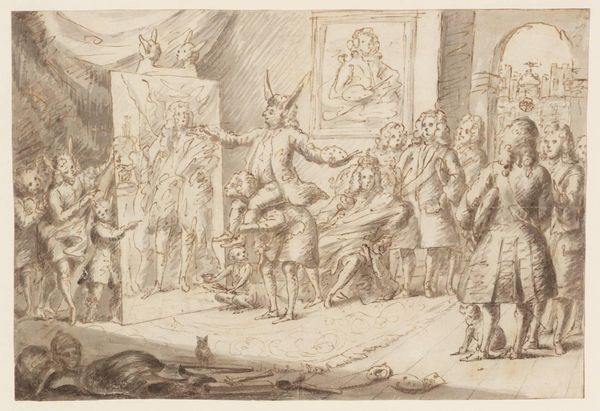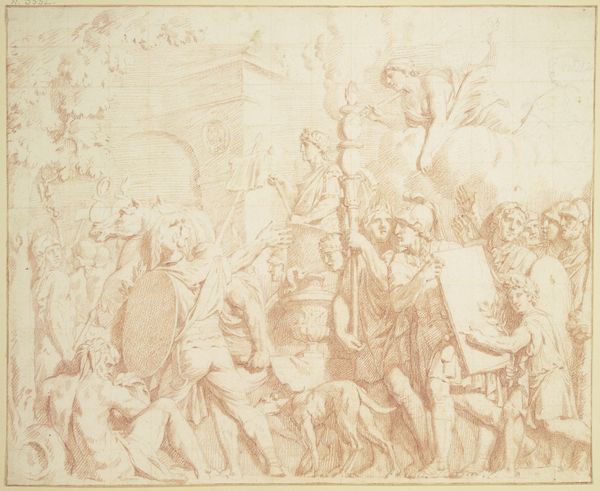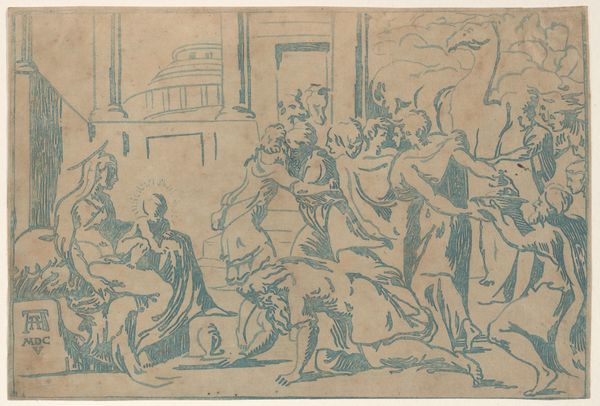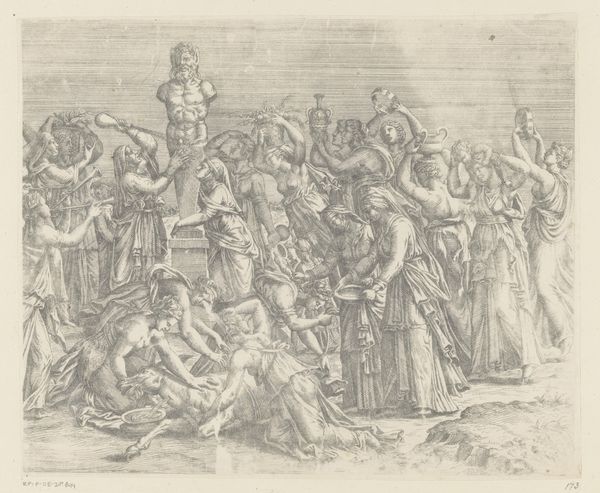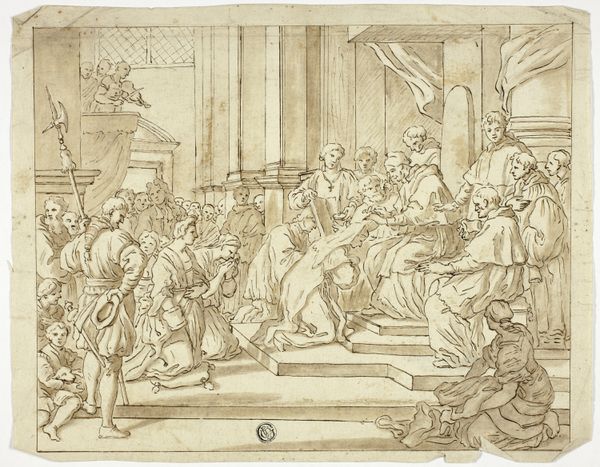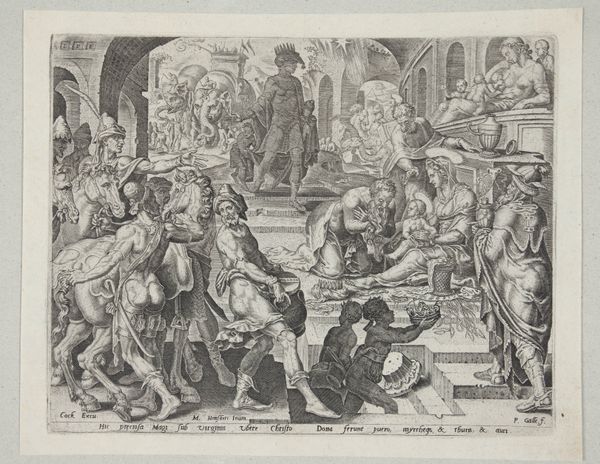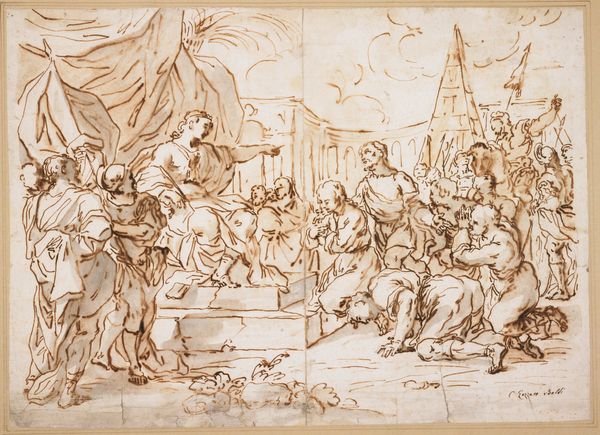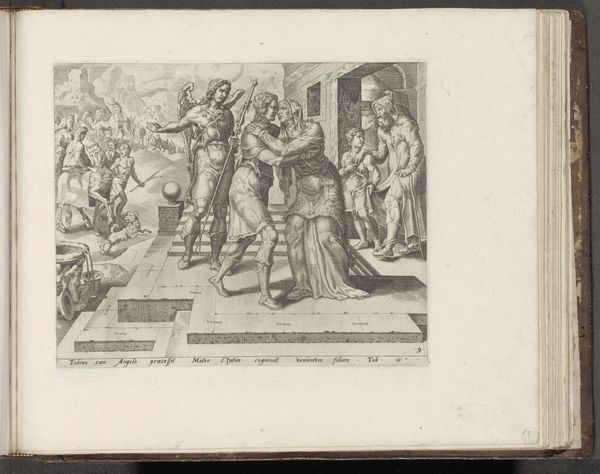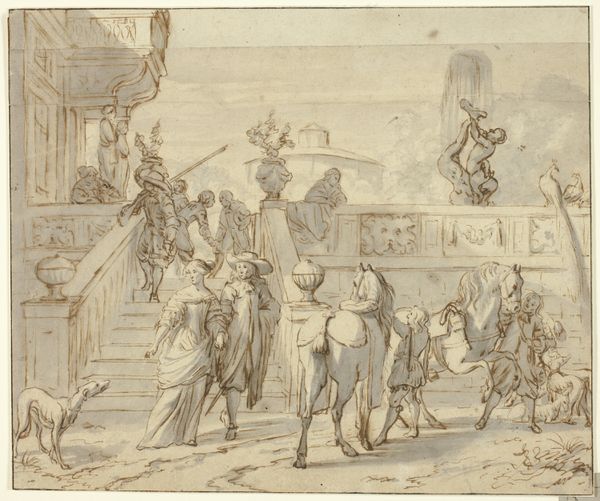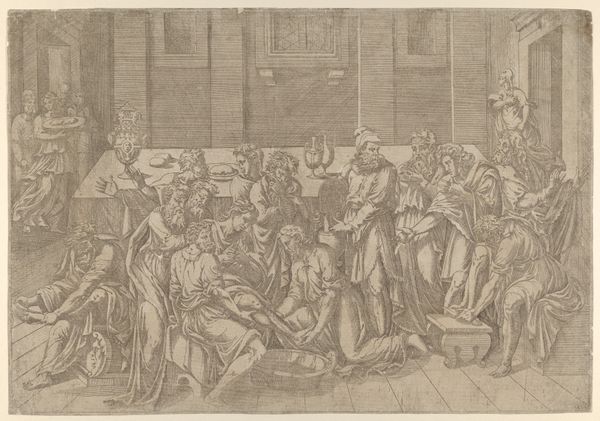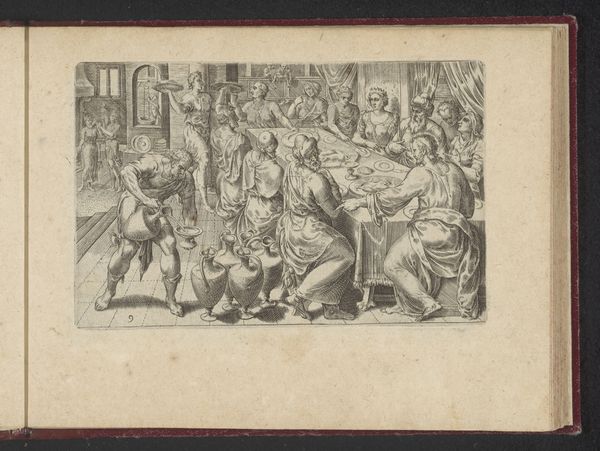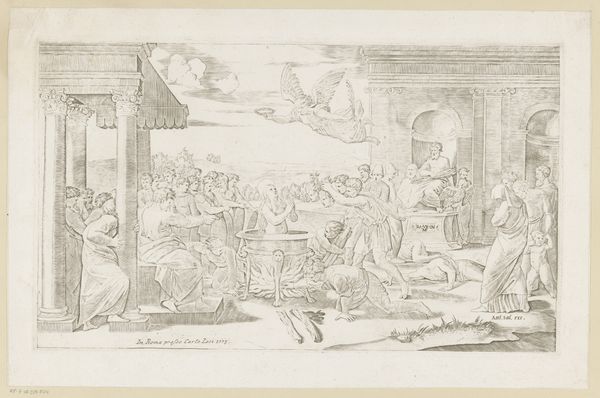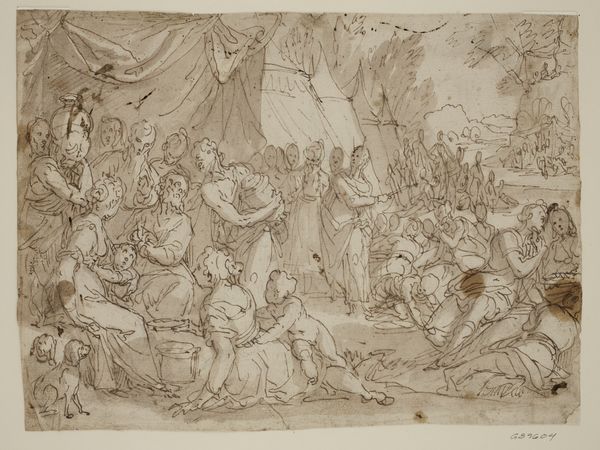
drawing, ink, pen
#
drawing
#
pen sketch
#
11_renaissance
#
ink
#
pen
#
history-painting
#
watercolor
Dimensions: 294 mm (height) x 358 mm (width) (bladmaal)
Editor: Here we have a pen and ink drawing with watercolor touches, “Figurer knælende for konge på trone,” which roughly translates to "Figures kneeling before a king on a throne" by Pieter Isaacsz, dating from sometime between 1569 and 1625. It's housed right here at the SMK. What I notice most is its preliminary feel; it has this energetic, almost frantic quality to it, as if we've caught the artist in the midst of sketching out a grand idea. What strikes you when you look at this drawing? Curator: The unfinished quality absolutely sings to me. It’s like catching a fleeting thought before it fully crystallizes, isn’t it? This piece feels like Isaacsz is wrestling with the complexities of power, literally staging it with the king elevated and everyone else in a state of supplication. It's not just a depiction, it's a dramatization, wouldn’t you say? Do you pick up on how the King, though central, seems almost… vulnerable amidst this throng? Editor: I see what you mean about the vulnerability. He's the focal point, but the sketchiness gives the scene a kind of dreamlike uncertainty. But I had assumed, maybe naively, the piece celebrated power. Curator: Oh, but can't it do both? Think about the time: this is an era of immense upheaval, right? Perhaps Isaacsz is exploring not just power, but its fragility. Are those figures kneeling out of genuine respect or enforced compliance? Look at the range of their gestures; what are they really thinking? It invites us to ponder on human motives, even the relationship of an artist to their patron. Editor: That's a perspective shift for me. I'm now noticing that even though everyone’s kneeling, their individual postures feel so different, filled with their own individual…thoughts, I guess? Thanks, I think my own assumptions of royal depictions were clouding my judgement of the artist’s hand in this drawing! Curator: Exactly! It’s in that tension between the intended display and the hinted-at reality that the real art happens. It becomes so much more, doesn't it?
Comments
No comments
Be the first to comment and join the conversation on the ultimate creative platform.
